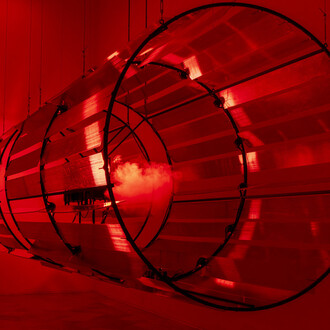In Passing Drama (1999), one of the five video installations included in this exhibition, a person from the artist’s family circle, while describing comings and goings across borders and countries, remarks that history can be so strange it often seems like a fairytale. But, he adds, the story told here is all too real. This comment inspired the title of a show that attempts to interpret and understand the evolution of Angela Melitopoulos’s work (Munich, 1961). Filming and screening in a different way, without losing touch with reality, is actually essential to how the artist’s works are structured. These are often collaborative creations, made primarily with Maurizio Lazzarato and Angela Anderson but also with many others, as for her there can be no other way to make them or to understand the process of artistic production. The exhibition’s subtitle expresses the importance of mapping resistance in these difficult times, when cinema might well somaticise our profound malaise based on the intersecting stories visualised here.
Philosophy and psychoanalysis, especially the ideas of Félix Guattari and, to a lesser extent, Gilles Deleuze, are a substantial part of this work. Concepts such as ecosophy, the refrain and chaosmosis are present here, along with notions drawn from the essays The Three Ecologies, A Thousand Plateaus and Chaosmosis. The exhibition opens with Assemblages (2010), a conceptual introduction to this mid-career retrospective where the artist’s installations have been inserted in the monumental setting of an old Carthusian monastery, and continues with two paired sets: Passing Drama and Crossings (2017), which focus on past and present refugee crises in Europe; and Two Maps (2011) and The Refrain (2015), which explore geography, memory, militarism and catastrophe in the Far East. Crossings, the ambitious video and sound installation the artist created for documenta 14 in Kassel, occupies a central location in the nave of the old church.
The complexity of the selected works is not only structural and conceptual but also technical. However, this combination makes us feel closer to these narratives because, although they might seem like fairytales, they are so true and real that they somaticise the malaise of our historical time.
















